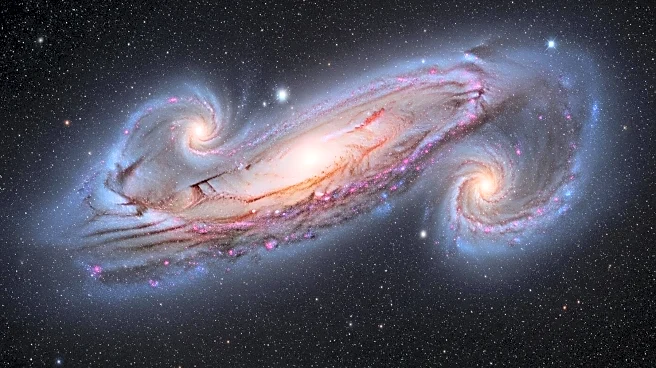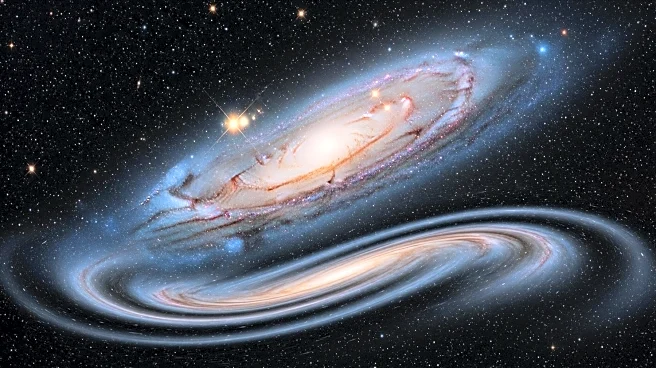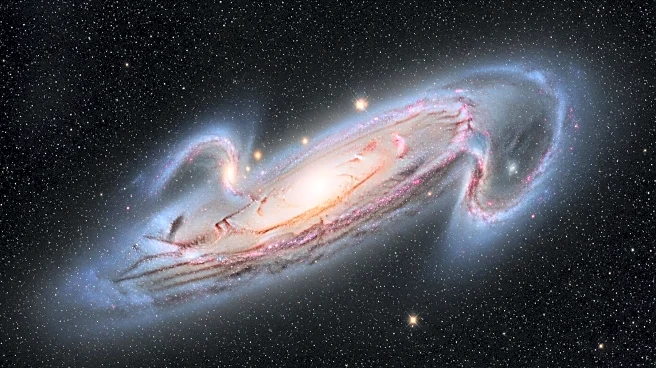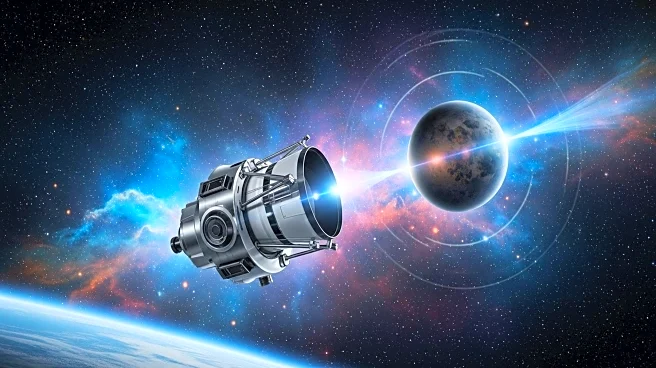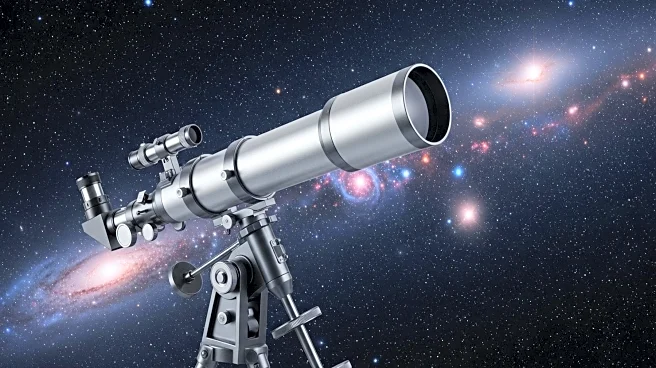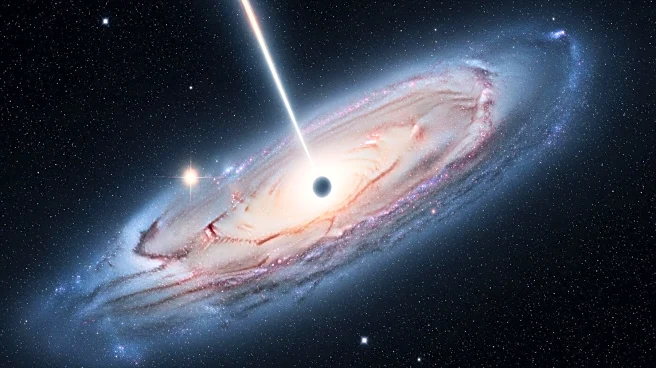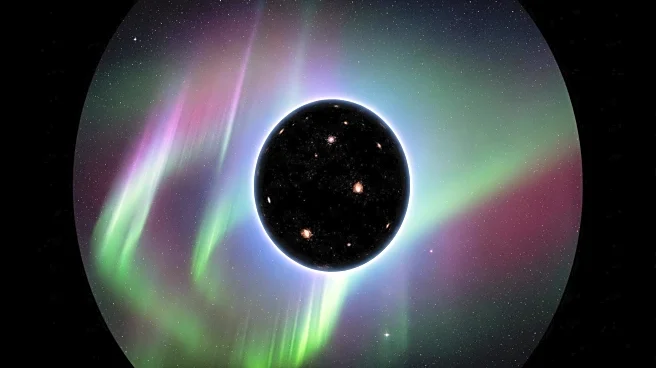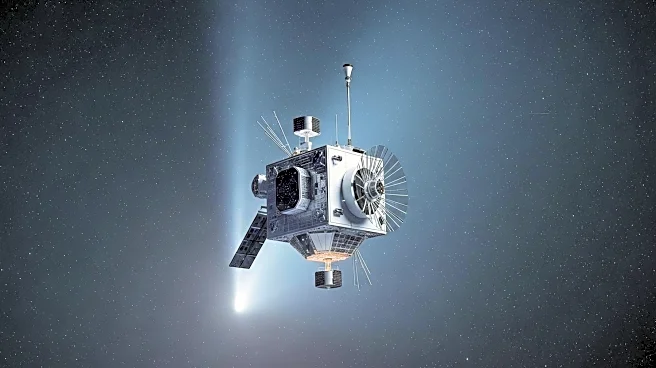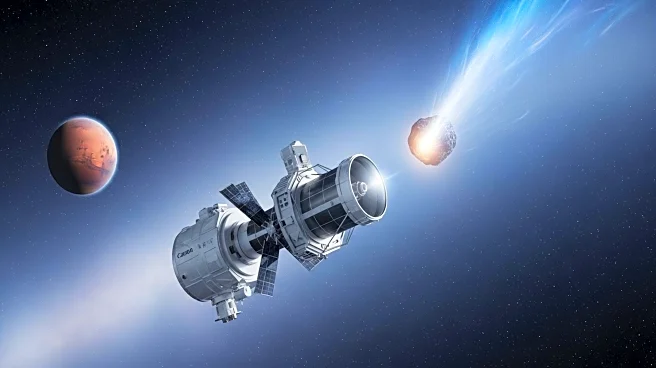What's Happening?
Astronomers have identified a massive wave pattern sweeping through the outer disk of the Milky Way galaxy. This discovery, made using data from the European Space Agency's Gaia space telescope, reveals a coherent wave pattern in the vertical positions and motions of stars, extending over tens of thousands of light-years. The wave appears to ripple away from the galactic center, adding complexity to the known rotation, warp, and wobble of the Milky Way. The research team, led by Eloisa Poggio from Italy's Istituto Nazionale di Astrofisica, utilized Gaia's precise measurements to map the galaxy in unprecedented detail. The wave's behavior is consistent with a traveling wave, and it may be linked to past galactic encounters or disturbances.
Why It's Important?
This discovery provides new insights into the dynamic nature of the Milky Way, offering clues about past events that have shaped the galaxy. Understanding these wave patterns can help astronomers learn more about the distribution of matter, both visible and dark, in the galaxy. The findings could also inform future studies on the formation and evolution of galaxies. The ability to map such structures with precision enhances our understanding of the Milky Way's history and its ongoing interactions with other cosmic bodies.
What's Next?
The upcoming fourth data release from Gaia is expected to provide even more precise measurements of star positions and motions, which will help refine the wave maps and improve our understanding of these galactic features. This data will allow scientists to better constrain the timing and origins of the wave, potentially linking it to specific past events. Continued research may also explore the relationship between this wave and other known structures, such as the Radcliffe Wave, to determine if they are connected.


